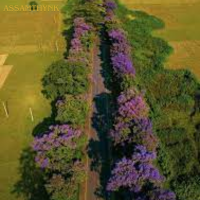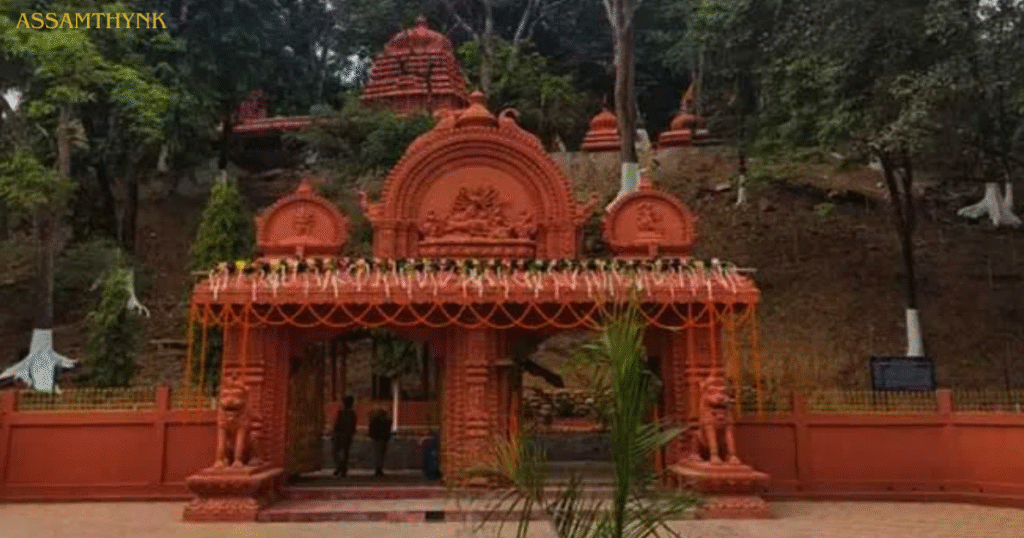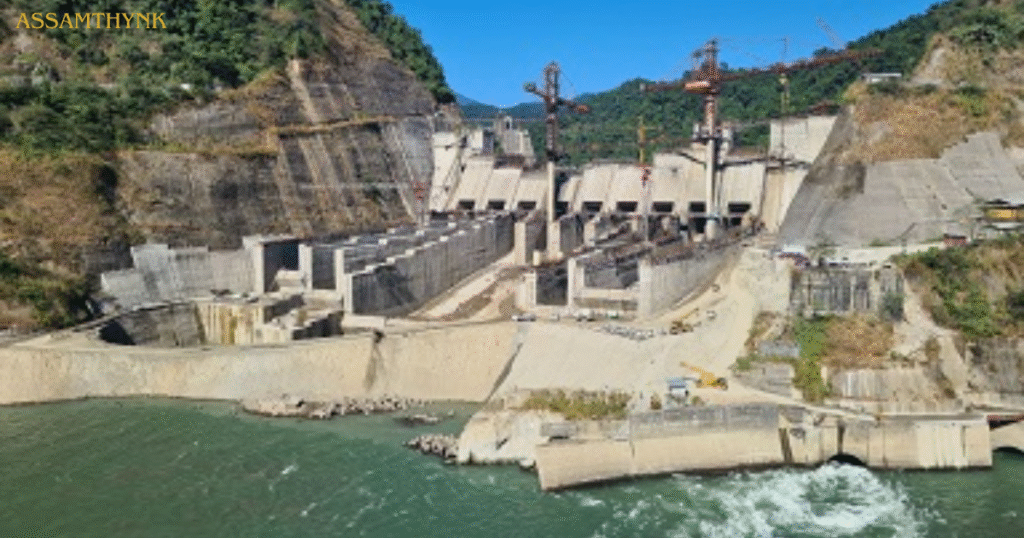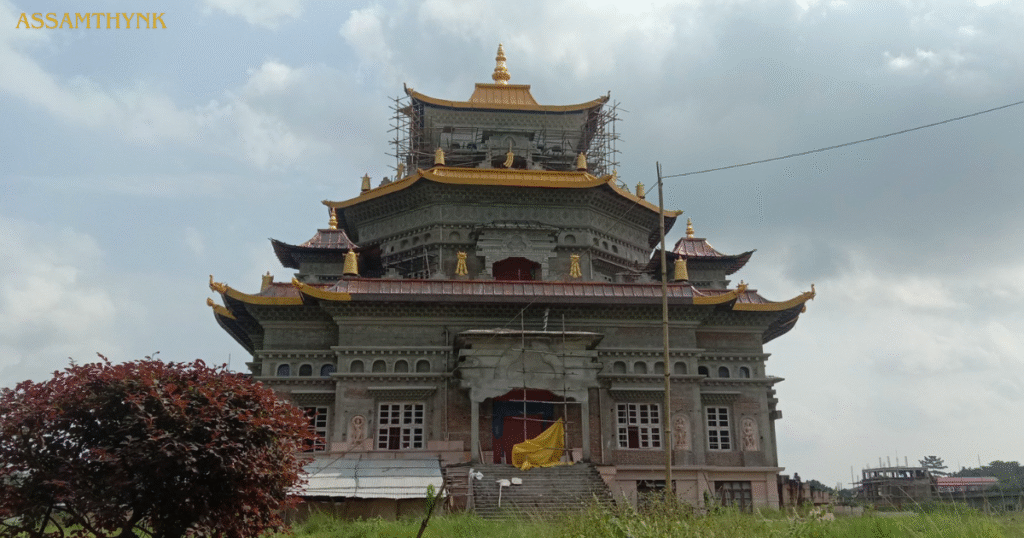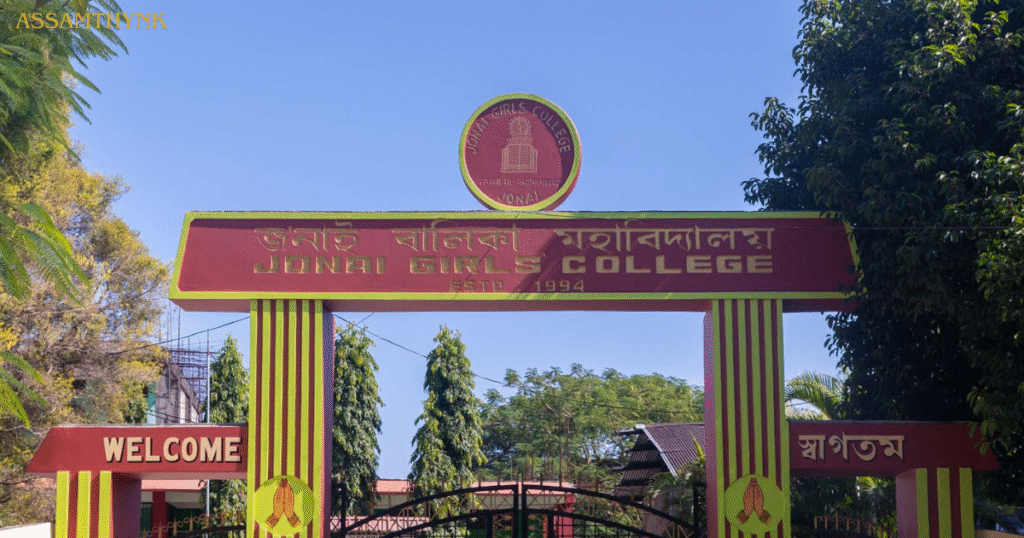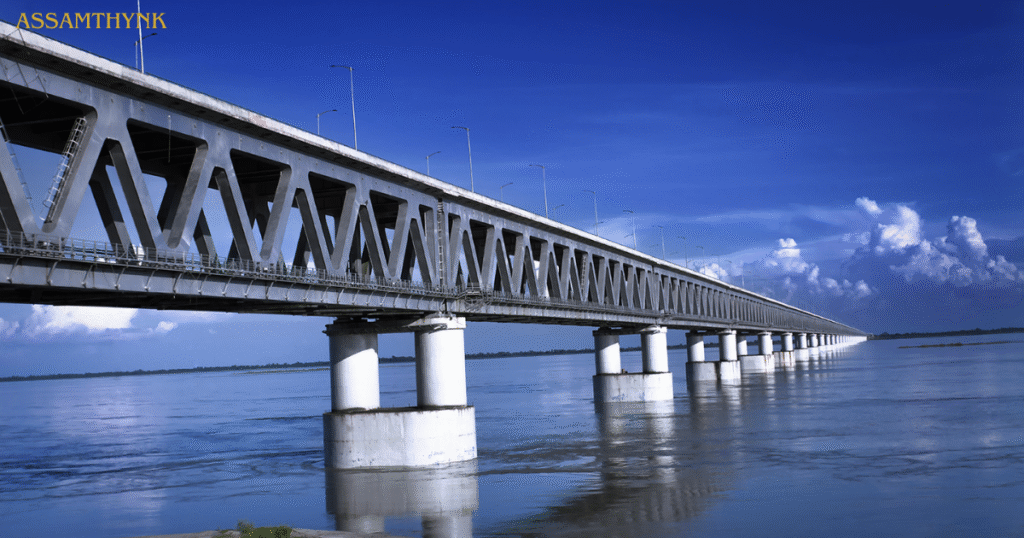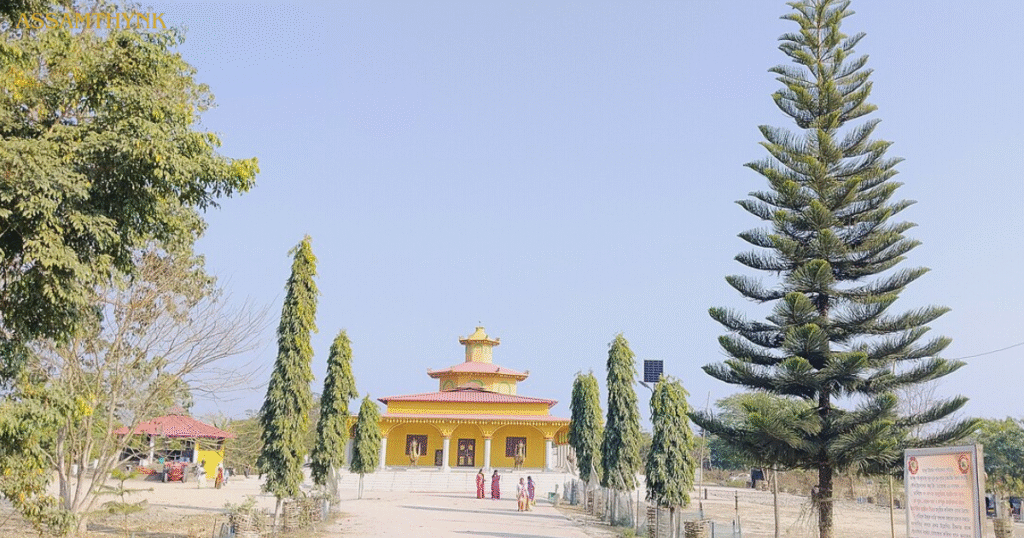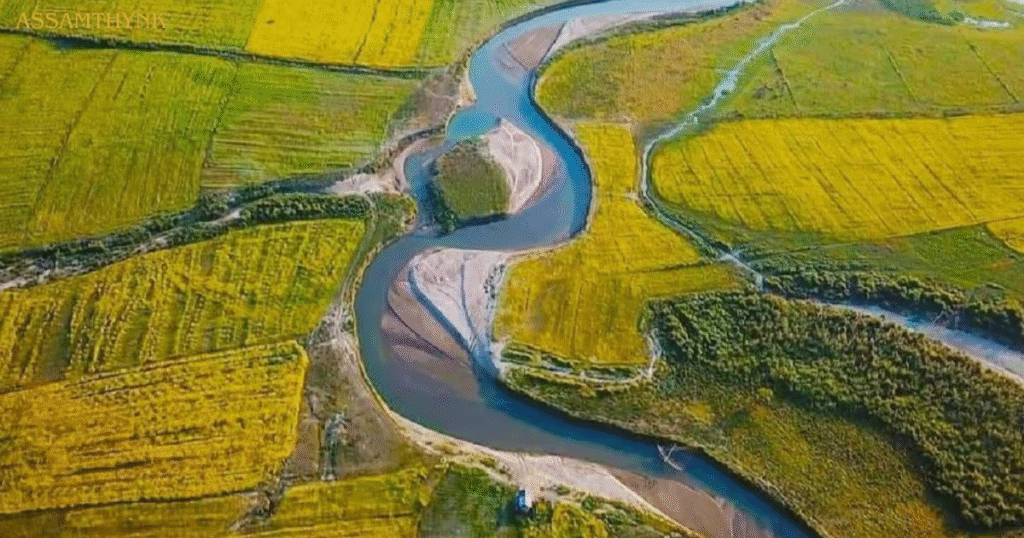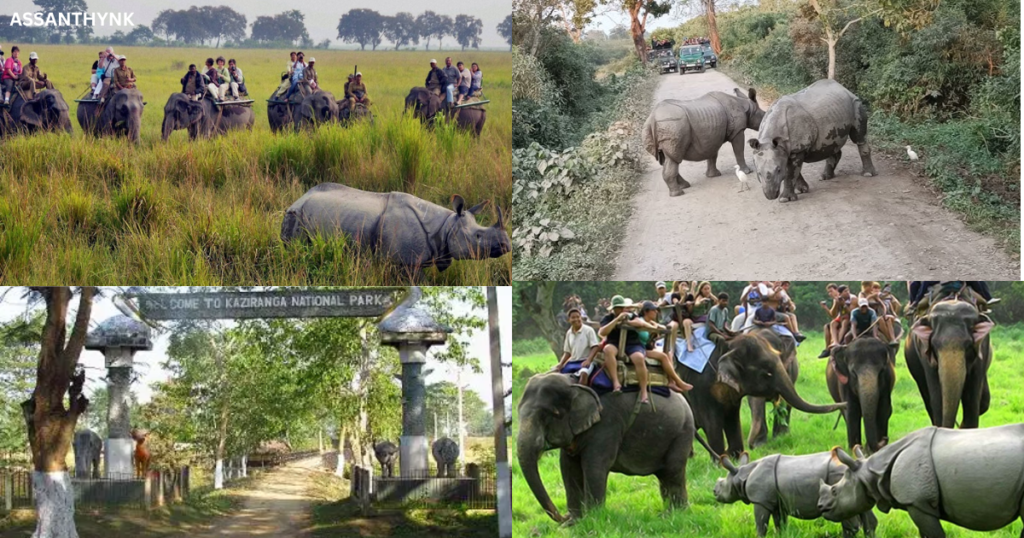Introduction
Dhemaji, a lesser-known district in the northeastern state of Assam, is often described as the “Land of Floodplains” — thanks to its name derived from the Assamese words “Dhal” (flood) and “Dhemaji” (playground). Despite its frequent encounters with floods due to the mighty Brahmaputra and its tributaries, this region blooms with unmatched natural beauty, vibrant tribal culture, and pristine rural life.
For the offbeat traveler, Dhemaji opens up a world of hidden gems — green fields, mysterious hills, historical remnants, and indigenous traditions that remain untouched by mass tourism.
Location and Geography
Dhemaji is located in the easternmost part of Assam, bordering Arunachal Pradesh to the north and east, Lakhimpur to the west, and Dibrugarh to the south (across the Brahmaputra River).
Geographical Highlights:
- Surrounded by the Brahmaputra River and numerous tributaries like Jiadhal, Gainadi, and Moridhal.
- Fertile alluvial plains ideal for agriculture and wetlands.
- Several unexplored hillocks and forested areas along the Assam-Arunachal border.
How to Reach Dhemaji
By Air:
- Nearest Airport: Mohanbari Airport (Dibrugarh) – ~80 km from Dhemaji.
- You can hire a taxi or take a ferry and road combination via Bogibeel Bridge.
By Train:
- Dhemaji Railway Station (DMC) connects with Guwahati, Dibrugarh, Siliguri, and Delhi.
- New rail connections via Bogibeel Bridge enhance connectivity.
By Road:
- NH-15 and NH-52 connect Dhemaji to major cities like Guwahati, North Lakhimpur, Tezpur, and Itanagar.
- ASTC buses and private vehicles ply regularly.
Top Tourist Attractions in Dhemaji
Though not mainstream, Dhemaji holds captivating attractions for explorers and culture lovers.
1. Malinithan Temple (Likabali)
Malinithan Temple, located near Likabali on the Assam-Arunachal Pradesh border, is a significant archaeological and mythological site in Dhemaji district. Believed to date back to the 10th–11th century, the temple is dedicated to Goddess Durga and showcases exquisite stone sculptures and ruins that reflect early Hindu temple architecture. According to legend, Lord Krishna and Rukmini rested here on their journey to Dwarka, and the goddess Malini welcomed them. The site features beautifully carved pillars, floral patterns, and images of deities like Indra and Kartikeya. Malinithan is a must-visit for history lovers, pilgrims, and those intrigued by ancient Assamese heritage.
2. Gogamukh
Gogamukh is a scenic and culturally rich town located in Dhemaji district, Assam, near the border with Arunachal Pradesh. Surrounded by rivers and greenery, it offers a peaceful atmosphere and serves as a gateway to tribal villages and natural landscapes. The town is predominantly inhabited by the Mishing and Adi communities, known for their vibrant festivals, bamboo crafts, and warm hospitality. Gogamukh’s weekly markets are great for exploring local produce, handwoven textiles, and ethnic cuisine. With its tranquil setting, cultural depth, and access to nature, Gogamukh is a perfect destination for those seeking an authentic rural experience in Assam.
3. Silapathar
Silapathar, located in the southwestern part of Dhemaji district, is a vibrant town that serves as a gateway to Assam and Arunachal Pradesh. It is known for its mix of modern infrastructure and cultural richness. Nearby attractions include Gerukamukh, a scenic riverside destination ideal for picnics and nature lovers, and Malinithan Temple, famous for its ancient stone carvings and religious significance. The town also provides access to the Ghuguha Dol, a historical site linked to Ahom royalty. Silapathar’s strategic location, natural beauty, and cultural sites make it a key stop for travellers exploring Dhemaji and beyond.
4. Jonai
Jonai, a serene town in the Dhemaji district of Assam, sits close to the Arunachal Pradesh border and is known for its vibrant tribal culture and natural beauty. Surrounded by lush hills and dense forests, it invites travelers to explore traditional Mishing and Deori villages, where they can witness local handicrafts, witness indigenous dances, and savor authentic cuisine. The region offers immersive village walks, riverside relaxation, and opportunities for birdwatching in nearby forested areas. Cultural festivals held here showcase live performances and artisanal traditions. Jonai’s peaceful ambiance, rich heritage, and scenic backdrop make it a compelling offbeat destination in Dhemaji.
5. Bogibeel Bridge (via Ferry or Road)
Bogibeel Bridge, connecting Dhemaji district to Dibrugarh across the Brahmaputra River, is a marvel of modern engineering and a major tourist draw. As the world’s longest combined road-and-rail bridge over water, it offers thrilling panoramic views of the mighty river and its shifting sands. Travelers can cross via ferry followed by a drive onto the bridge, or simply drive across to experience its grandeur. Ideal for photo enthusiasts and engineering aficionados, it’s particularly spectacular at sunrise and sunset when golden light dances on the water below. Amid scenic landscapes, the bridge symbolizes connectivity and progress while enhancing travel between Assam’s northern and southern banks.
6. Habong
Habong, nestled in the lush rural landscapes of Dhemaji district, is a serene hamlet ideal for travelers seeking tranquility and cultural immersion. Surrounded by vibrant paddy fields, bamboo groves, and winding rural paths, it offers peaceful village walks and a chance to experience traditional Mishing lifestyle. Visitors can interact with friendly locals, witness daily activities like weaving and rice farming, and savor home-cooked meals featuring local ingredients. Nature lovers will enjoy birdwatching, while photographers can capture timeless scenes of rural life. With its raw, offbeat charm and authentic backdrop, Habong is a hidden gem for those exploring Dhemaji’s cultural heart.
Culture and People of Dhemaji
Dhemaji is home to a diverse mix of Assamese, Mishing, Deori, Sonowal Kachari, and other tribal communities. The Mishing tribe is particularly prominent, known for their distinct traditions, bamboo houses (chang ghar), and handwoven textiles.
Festivals Celebrated:
Ali-Ai-Ligang:
Ali-Ai-Ligang is a major spring festival celebrated by the Mishing tribe of Dhemaji. It marks the beginning of the sowing season and features traditional dance (Gumrag), music, and feasting. People prepare local delicacies like pork, fish, and rice beer (Apong), making it a vibrant display of Mishing culture.
Bihu:
Bihu is celebrated with great enthusiasm in Dhemaji, uniting both tribal and non-tribal communities. The vibrant festivals—Rongali bihu, Kongali, and Bhogali Bihu—are marked by traditional dances, folk songs, feasts, and community gatherings that reflect the region’s cultural richness.
Rongali Bihu Mela:
Rongali Bihu Mela in Dhemaji is a vibrant celebration marking the Assamese New Year in mid-April. It features traditional songs, energetic Bihu dances, and community feasts. Colorful stalls showcase local crafts and cuisine, while families gather in open-air venues. It’s a joyful display of Assam’s cultural spirit.
Best Time to Visit Dhemaji
The best time to visit Dhemaji is during the winter months from November to February. The weather remains cool, pleasant, and dry, making it ideal for sightseeing, village tours, and cultural festivals like Ali-Ai-Ligang. During this time, the landscape is lush and green, and the chances of flooding are minimal. Avoid the monsoon season (June to September) as heavy rains often cause waterlogging and transportation disruptions. Summer (March to May) is moderately hot but still suitable for eco-tourism activities. For the most enjoyable experience, plan your Dhemaji trip in winter when nature and culture are at their best.
Food of Dhemaji
The food of Dhemaji reflects the simplicity and richness of rural Assamese and tribal life. Rooted in tradition, the local cuisine primarily features rice, freshwater fish, seasonal vegetables, and bamboo shoots. Meals are typically light, nutritious, and cooked with minimal oil and spices, allowing the natural flavours of the ingredients to shine through.
One of the most iconic beverages is Apong, a traditional rice beer brewed by the Mishing tribe. It is served during festivals, ceremonies, and to welcome guests. Fish Tenga, a tangy and refreshing Assamese fish curry made with tomatoes or elephant apple (ou tenga), is a staple in many households.
Among tribal delicacies, roasted pork with bamboo shoot curry stands out. It is rich, smoky, and often cooked over woodfire with minimal spices. Another everyday favourite is Pitika, a mashed side dish prepared with boiled potato, roasted brinjal, or banana stem, flavoured with mustard oil, green chilies, and onions.
Meals are often served on banana leaves, offering an eco-friendly and cultural touch. Visitors in Dhemaji can enjoy home-cooked meals in tribal homestays or local eateries, giving them a taste of authentic Assamese and Mishing cuisine that is both hearty and wholesome.
Nature and Eco-Tourism
Dhemaji’s landscape is rich in wetlands, paddy fields, and seasonal grasslands.
Ideal for:
- Birdwatching: Migratory birds visit in winter.
- Rural tourism: Stay with tribal families, participate in farming, weaving, and fishing.
- River excursions: Enjoy a boat ride on the Subansiri or Jiadhal.
Local NGOs and eco-tourism efforts are slowly promoting sustainable rural travel in the district.
Handloom and Handicrafts
The women of Dhemaji, especially the Mishing community, are known for weaving beautiful mekhela chadors, gamochas, and shawls.
- Traditional motifs reflect nature, tribal myths, and local flora-fauna.
- Available in local markets of Silapathar, Jonai, and weekly haats.
Offbeat Experiences in Dhemaji
Dhemaji offers a range of offbeat experiences that allow travellers to connect deeply with its land, people, and traditions. One of the most enriching activities is village stays in places like Simen Chapori, Gogamukh, or Jonai, where visitors can live with local families, sleep in traditional chang ghars (stilt houses), and observe daily life. These stays provide firsthand insight into tribal customs, weaving, and food preparation.
For nature lovers, boat rides and fishing across tributaries like Gainadi and Jiadhal are peaceful yet thrilling experiences. Travelers can ride in traditional wooden canoes and try their hand at local fishing methods using bamboo traps or nets.
Photography enthusiasts will find Dhemaji a visual delight. Early mornings shrouded in mist over lush paddy fields, portraits of elders in traditional attire, and dramatic sunsets along riverbanks offer perfect moments to capture the soul of the region.
Agritourism is another growing attraction in Dhemaji. Visitors can join in seasonal farming activities like rice planting, harvesting, cattle herding, or vegetable gardening. These immersive experiences not only offer a break from city life but also foster a deeper appreciation for sustainable living and the agricultural heartbeat of rural Assam.
Where to Stay in Dhemaji
While luxury hotels are limited, visitors can find:
- Budget lodges in Dhemaji town and Silapathar.
- Guesthouses in Gogamukh and Jonai.
- Homestays with local families (especially during festivals).
Online booking options are growing, but advance planning is recommended.
Travel Tips for Dhemaji Visitors
- Plan your travel in winter to avoid flood disruptions.
- Try local ferries or country boats for authentic river travel.
- Participate in village fairs and festivals to experience tribal hospitality.
- Avoid monsoon travel due to waterlogging and transport issues.
- Ask permission before photographing tribal rituals or homes.
- Buy local weaves directly from village cooperatives to support artisans.
Suggested 3-Day Itinerary
Day 1:
- Arrive at Dhemaji town
- Visit Malinithan Temple
- Explore local market & taste Assamese thali
Day 2:
- Travel to Jonai – visit tribal villages
- Enjoy traditional lunch and weaving demonstration
- Attend evening cultural dance (if festival time)
Day 3:
- Head to Gogamukh and Gerukamukh
- Scenic view of Subansiri River and dam area
- Evening return to Silapathar or Dhemaji
Top 10 FAQ
1. Where is Dhemaji located?
Dhemaji is a district in the northeastern state of Assam, India. It lies on the northern bank of the Brahmaputra River and shares a border with Arunachal Pradesh.
2. Why is Dhemaji called the “Land of Floodplains”?
Dhemaji is known as the “Land of Floodplains” because of its low-lying geography and proximity to the Brahmaputra River and its tributaries. The region experiences frequent flooding during the monsoon season, which shapes its landscape and lifestyle.
3. What is the best time to visit Dhemaji?
The best time to visit Dhemaji is from October to March, when the weather is pleasant and the risk of flooding is low. This period also offers opportunities to witness local festivals and explore scenic beauty.
4. What are the top tourist attractions in Dhemaji?
Top attractions in Dhemaji include:
- Gerukamukh
- Bogibeel Bridge (via ferry or road)
- Habung (Historical Site)
5. How to reach Dhemaji?
Dhemaji is well connected by:
- Road: National Highway 15 connects it with major Assam cities.
- Rail: Dhemaji Railway Station and nearby Silapathar station offer rail connectivity.
- Air: The nearest airport is Dibrugarh Airport, around 120 km away.
6. Is Dhemaji prone to floods?
Yes, Dhemaji is one of the most flood-prone districts in Assam. The annual monsoon floods affect large parts of the district, especially during June–September.
7. What makes Dhemaji culturally unique?
Dhemaji is home to various indigenous communities like the Mising, Sonowal Kachari, and Deori tribes. Traditional festivals like Ali Ai Ligang and Bihu are celebrated with dance, music, and ethnic food.
8. What kind of local cuisine can I expect in Dhemaji?
Dhemaji offers traditional Assamese dishes, including:
- Rice and fish curry
- Bamboo shoot delicacies
- Pork and chicken with local herbs
- Apong (traditional rice beer of the Mising tribe)
9. Are there any eco-tourism or adventure activities in Dhemaji?
Yes. Tourists can enjoy:
- River boating and ferry rides (especially near Bogibeel Bridge)
- Birdwatching at Bordoibam Bird Sanctuary
- Nature trails and cultural village tours in tribal areas like Silapathar and Jonai
10. Is Dhemaji suitable for offbeat travel or cultural tourism?
Absolutely. Dhemaji offers an offbeat experience with its natural floodplains, tribal traditions, untouched landscapes, and peaceful rural life—making it ideal for slow travel and cultural exploration.
Conclusion
Dhemaji is not just a name from flood news headlines; it is a land rich in culture, resilience, and serenity. From ancient temples like Malinithan to the colorful life of tribal villages, and from rice fields to river tales, Dhemaji invites travelers to slow down and witness a unique blend of nature and heritage.
For those looking to step off the beaten path and experience a raw, real, and refreshing side of Assam, Dhemaji is a destination waiting to be discovered.
